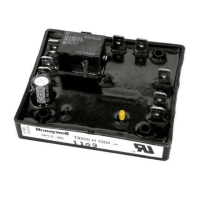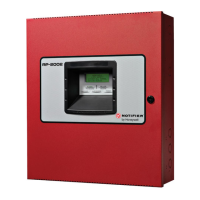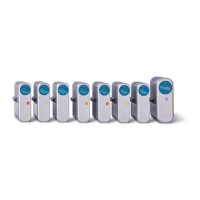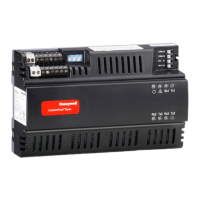SPZ--8000 Digital Integrated Flight Control System
A28--1146--055
REV 2
Electronic Flight Instrument System (EFIS)
4-4
D BRG (Bearing) Source Select Knobs -- The EHSI can display two
independent bearing pointers. The rotary knob is used to select the
NAV sources as described in Table 4--1.
BRG f
ff
f
BRG Z
ZZ
Z
OFF OFF
VOR 1 VOR 2
ADF 1 ADF 2
FMS 1 FMS 2
Bearing Pointer Sources
Table 4- -1
D HS I DIM (Outer Concentr ic ) Knob -- Turning the horizontal situation
indicator (HSI) dim knob adjusts the overall brightness of the EHSI.
After the reference level is set, a photo sensor maintains the brightness
level over various lighting conditions. The OFF position turns the EHSI
off and selects the composite mode on the EADI.
NOTE: On installations with TCAS, the ADI or HSI DIM control
does not select a composite display when it is turned OFF.
The display is blanked and the remaining operating tube
displays the EADI.
D ADI DIM (Outer Concentric) Knob -- Turning the attitude director
indicator (ADI) dim knob adjusts the overall brightness of the EADI.
After the reference level is set, a photo sensor maintains the brightness
level over various lighting conditions. The OFF position turns the EADI
off and selects the composite mode on the EHSI.
D WX DIM (Inner Conce ntr ic ) Knob -- Turning the WX dim knob adjusts
the brightness of the weather radar display on the EHSI. T urning the
knob to the OFF position removes the weather information from the
display . If the composite mode is displayed on the EHSI, the WX DIM
knob controls the brightness of the ADI sphere.
D DH (Dec is ion He ight ) Knob -- T urning the inner DH knob sets the
decision height on the EADI between 20 and 990 feet in 10--foot
increments. Turning the DH knob fully counterclockwise removes the
decision height display from the EADI.
NOTE: DH on both EADIs is set from one side of the cockpit at a
time. The side is selected using the CPL (couple) switch
on the flight guidance controller.
D TST b utton (Test) Button -- Pushing the TST button tests the radio
altimeter and EFIS when on the ground, or the radio altimeter only
when in the air (if the aircraft is not in the GS capture mode).

